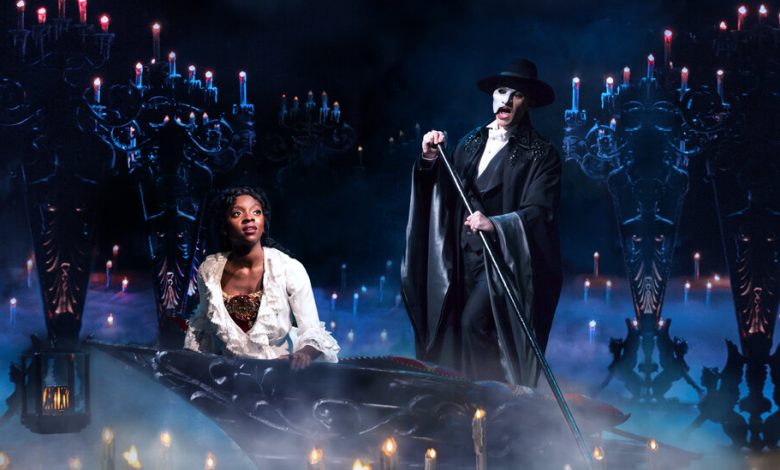‘Phantom of the Opera,’ Broadway’s Longest-Running Show, to Close

“The Phantom of the Opera,” the longest-running show in Broadway history and, for many, a symbol of musical theater, will drop its famous chandelier for the last time in February, becoming the latest show to fall victim to the drop-off in audiences since the pandemic hit.
The closing is at once long-expected — no show runs forever, and this one’s grosses have been softening — but also startling, because “Phantom” had come to seem like a permanent part of the Broadway landscape, a period piece and a tourist magnet that stood apart from the vicissitudes of the commercial theater marketplace.
But in the year since Broadway returned from its damaging pandemic lockdown, the theatergoing audience has not fully rebounded, and “Phantom,” which came back strong last fall, has not been selling well enough to defray its high weekly running costs.
The show will commemorate its 35th anniversary in January, and then will play its final performance on Broadway on Feb. 18, according to a spokesman. The cast, crew and orchestra were informed of the decision on Friday.
The show will continue to run elsewhere: The London production, which is even older than the one in New York, closed in 2020, at the height of the pandemic, but then returned, with a smaller orchestra and other cost-lowering reconfigurations, a year later. A new production opened last month in Australia, and the first Mandarin-language production is scheduled to open in China next year. Also: Antonio Banderas is working on a new Spanish-language production.
“Phantom” is an icon of 1980s Broadway, created by three of the most legendary figures in musical theater history: the composer Andrew Lloyd Webber, the director Hal Prince, and the producer Cameron Mackintosh. All were long devoted to the show — in 2018, when it turned 30, they celebrated with a light show projected onto the Empire State Building in sync with parts of the score; last year, when the show resumed performances after the lockdown, Webber D.J.’d a block party outside the theater. (Yes, there was a remix of the “Phantom” theme.)
The show, about a mask-wearing opera lover who haunts the Paris Opera House and becomes obsessed with a young soprano, is famous for that chandelier, which crashes onto the stage each night, and is characterized by over-the-top spectacle and melodrama.
When the Broadway production opened on Jan. 26, 1988, the New York Times critic Frank Rich criticized many elements of the show, but began his review by acknowledging, “It may be possible to have a terrible time at ‘The Phantom of the Opera,’ but you’ll have to work at it.”
By 2014, when Times critic Charles Isherwood revisited, the show had won over its many of its skeptics. “Soon after the orchestra struck up those thundering, ominous organ chords, I found my expectations upended, my jaded armor melting away,” Isherwood wrote. “With the distance of more than a decade — and a couple hundred new musicals — since my last visit, I found myself with a new appreciation for this beloved show’s gothic theatricality.”
Over the years “Phantom” has become a fixture that has drawn enormous audiences around the world. Since the first production opened in London in 1986, the show has been seen by more than 145 million people in 183 cities around the world; it has been performed in 17 languages, and next year that number is expected to rise to 18, when the Mandarin production opens.
On Broadway, the show has been seen by 19.8 million people, and has grossed $1.3 billion, since opening, according to figures compiled by the Broadway League. It grossed $867,997 during the week ending Sept. 11, which is decent but not good enough to sustain a run of a musical of this scale (with a large cast and large orchestra and elaborate set, all of which drive up running costs).
The production’s intention to close the show was reported on Friday by The New York Post.




